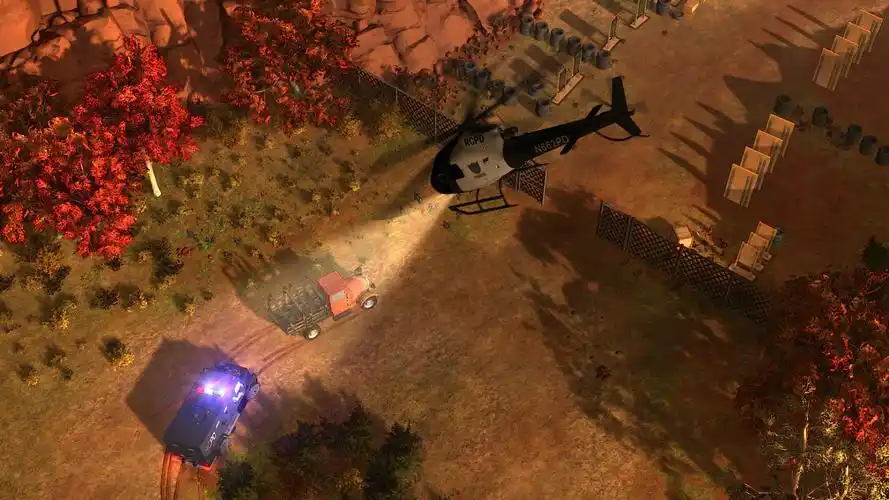Title: Ascending Realism: The Thrilling World of 'Stairway Sign Installer Simulator VR: Place Missions Expansion'
The virtual reality (VR) landscape is perpetually evolving, pushing beyond the boundaries of traditional gaming into the realm of hyper-specialized, oddly satisfying job simulators. From wielding power washers to operating heavy machinery, these titles offer a unique blend of mundane taskwork and meditative gameplay. Standing tall among them, both literally and figuratively, is the cult classic Stairway Sign Installer Simulator VR. Its newly released expansion, Place Missions, doesn’t just add new levels; it fundamentally redefines the experience, transforming a quirky simulator into a deeply immersive and unexpectedly profound test of skill, patience, and spatial intelligence.
For the uninitiated, the core game tasks players with the seemingly straightforward job of installing safety and directional signs in vast, multi-storied structures like airports, hospitals, and corporate headquarters. The magic lies in its relentless attention to detail. Every tool feels tangible: the weight of the drill, the resistance of the screw biting into concrete, the satisfying click of a perfectly aligned sign snapping into its bracket. It’s a game where precision is rewarded and carelessness leads to wobbly signs, frustrated foreman audio logs, and the ultimate shame of a failed safety inspection.
The Place Missions expansion elevates this concept from simple installation to complex architectural integration. Gone are the days of being handed a schematic with pre-marked drill points. The expansion introduces a new layer of professional responsibility: planning and placement. You are no longer just an installer; you are a wayfinding consultant, an ergonomics expert, and an artist of public space.

A typical "Place Mission" begins not with a toolbox, but with a tablet. The client—perhaps a flustered airport manager or a meticulous hospital administrator—provides a broad directive: "Ensure passengers can find the international departures lounge from the main entrance" or "Direct visitors to the cardiology wing without causing congestion." The empty, echoing atrium of a new building is your canvas. Using your VR controllers, you must now plot the entire wayfinding journey.
This planning phase is where the expansion truly shines. You pull up the building’s digital blueprint on your tablet, studying traffic flow patterns and potential bottlenecks. You have a budget of different sign types: large overhead directional signs, wall-mounted informational boards, floor decals, and free-standing pedestal signs. Each has its own cost, efficacy, and aesthetic impact. Placing a massive overhead sign might be the most effective solution, but does it clash with the architect’s beautiful minimalist lighting design? Would a series of smaller, tasteful wall signs be better? The expansion forces you to think like a real professional, balancing practicality with aesthetics and budget constraints.
VirtualReality #SimulationGame #IndieGame
Once your plan is submitted and approved (often with some nitpicky feedback from the client), you move into the execution phase, which is now infinitely more personal. Because you designed the plan, every drill hole matters more. The laser level isn’t just for alignment; it’s to ensure the sightlines you meticulously plotted on your tablet are perfect in reality. The tension is palpable as you stand atop your scissor lift, lining up the first bracket. A misstep here isn’t just a wobbly sign; it’s a flaw in your entire navigational system.
The environments in Place Missions are breathtaking in their scale and silence. The new locations include a sprawling, sun-drenched shopping mall before its grand opening, a multi-level modern art museum with fragile exhibits, and a labyrinthine underground metro station. The sense of isolation and purpose is profound. The only sounds are the hum of distant HVAC systems, the echo of your own footsteps, and the whirr of your power tools. It’s a VR experience that is as much about the zen of focused work as it is about the challenge.
StairwaySignSimulator #PlaceMissions #VRExperience
Furthermore, the expansion introduces new tools and physics challenges. You must now use a stud finder to locate secure mounting points on drywall partitions, a far cry from the solid concrete of previous missions. String lines are crucial for ensuring a long series of signs are perfectly level across a vast distance. The introduction of fragile floor decals requires a steady hand and a new application tool, adding another layer of physicality to the gameplay.
Ultimately, the Place Missions expansion is a masterclass in how to deepen a simulation. It understands that true immersion comes not from more tasks, but from greater agency. It trusts the player with professional-grade decision-making and then makes them physically execute their own vision. The immense satisfaction no longer comes only from a job well done, but from a system well-designed and perfectly implemented. You look back from the top of your scissor lift at a corridor filled with clear, coherent, and professionally installed signage that you conceived and built from scratch. It’s a feeling of genuine accomplishment that few other games, VR or otherwise, can provide. Stairway Sign Installer Simulator VR: Place Missions Expansion is no longer a joke about a boring job; it is a compelling, authentic, and strangely beautiful simulation of a craft you never knew you wanted to master.


















